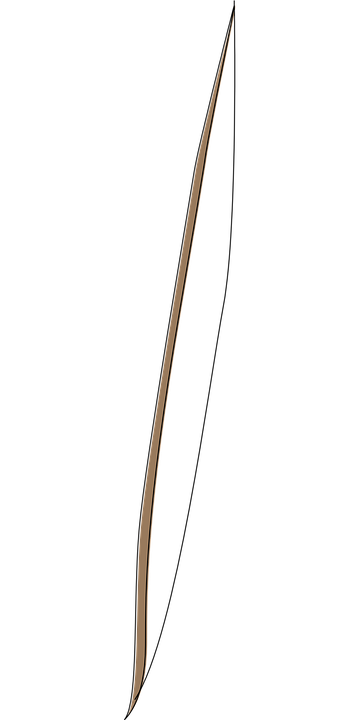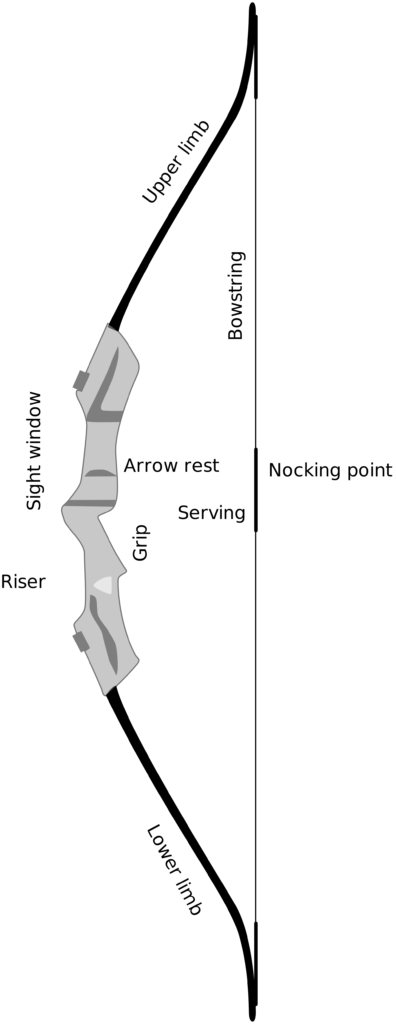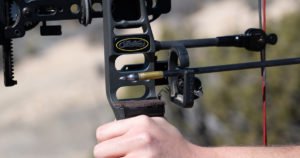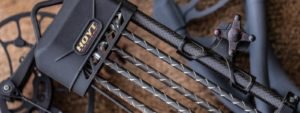Learning archery is easy and fun, offering a great challenge for all ages and a sport that can lead to local, national, and international competition.
If you’d like to get into archery as a hobby but you have no idea where to begin, I thoroughly comprehend where you’re coming from: when I began, I felt completely overpowered.
I was eager to get a bow and begin shooting, however I was befuddled by every one of the terms and gear and details.
That is the reason I assembled this post: as a method for exhibiting the sport and acquainting you with the game.
Archery Safety:
Archery has the lowest incidence of injury of all shooting sports and is the fourth safest of all sports. The reason for this outstanding safety record is that the rules and procedures developed for archery are adhered to by the participants which ensure each person’s safety.
- Always use proper safety equipment.
- Always use arrows of the proper length for you.
- Follow the instructions of the Range Officer.
- Wear snug fitting clothes, tie back long hair, remove large earrings, and clear off any pins or remove anything from chest pockets.
- Never “DRYFIRE” your bow.
- POINT, DRAW, and AIM your arrow only in the direction of your target.
- Always aim and shoot only at targets on the range.
- Place your bow in the bow rack once you have finish the end and stand behind the waiting line.
- Always walk; never run, on the archery range.
Archery Equipment:
they are many styles of bows out there but the ones you will be around the most are these types:
Long Bow:

The most traditional type of bow is the longbow. These are the bows that most have seen in the old Errol Flynn-Robin Hood movies. They were made from a single piece of wood.
Modern long bows are laminated strips of wood, with a leather-wrapped grip and a string. This type of bow remains very popular among archers that prefer a more traditional experience.
A long bow offers many exciting challenges to an archer by keeping the equipment and experience as basic as possible.
Traditional Recurve and Olympic Recurve Bows:

The first evolution of the bow is the recurve bow. The recurve is constructed with limbs that have a curve built into them.
This special curve stores more energy in a shorter length limb. The result is increased arrow speed.
A recurve can be fashioned from wood or from machined aluminum and also provides a shelf for the arrow to rest on that is centered to provide truer arrow flight.
The recurve is the bow of choice for those competing on the international level.
Compound Bows:

The most technologically advanced form of the bow is the compound bow.
A compound bow has an eccentric pulley or cam mounted at the end of each limb tip.
Most compound bows have a let-off. This a point where the draw weight of the bow is reduced by 60% to 85%, or “let off”.
This helps the archer remain at full draw for a longer period of time.
Arrows:
Selecting arrows is not difficult; it depends on the type of bow and what you are shooting at.
There are four types of arrow to choose from. Most traditionalists who use longbows prefer shooting cedar arrows.
Recurve and compound shooters may choose from aluminum, carbon, Aluminum/Carbon composite, and fiberglass, depending on your needs.
Getting started:
Eye dominance:
Typically, a person is either right handed and right eye dominant or left handed, left eye dominant. There is a small percentage of the population however, that are “cross dominant”.
to know your dominant eye just place your two hands together one on top of the other and and then spread them slightly to create a small golf ball sized hole.
With both eyes open, raise the hole up in front of their face with arms fully extended and look through the hole at an object in the distance.
While keeping both eyes open, have them bring the hole back to their face. The eye the hole goes to is the dominant eye.
Handling the Bow:
These are the steps you take in executing a shot:
Stance:
The basic “square” stance is used for all beginning archers.
To start, provide a shooting line where the archer will line up with one foot placed on each side of the line as if they were shooting.
The feet should be about shoulder width apart. The toes are turned very slightly away from shooting line.
Nock Arrow:
If you hold the bow vertically, bring the arrow over the bow to load. Handle the arrow by the nock to load when the bow is hanging at your side.
The arrow is snapped on the string under the nock rest with the arrow shaft resting on the bow’s shelf.
The index fletching (different color than other two) faces up towards you.
Drawing Hand Set:
To start, grasp the string using a “scout salute” of three fingers only, just before the first joint of fingers.
The thumb and little finger are locked down out of the way.
Use either a grip of three fingers under the arrow nock, or a grip of one finger above the arrow nock and two under to pull the string.
Bow Hand Set:
Your hand grips the bow handle along the “life line” to guide placement. The palm is not used, pressure is resisted with the base of your thumb on the handle.
As the bow is lifted and pulled, the bow arm will straighten, remember to rotate your elbow out away to avoid the string’s path upon release.
Pre-Draw:
Imagine a vertical line through the spot you want to hit. All arrows should align with this path.
Any adjustments will be for high or low errors, but the arrows will not be sprayed around the target using this technique.
Draw:
Start by slowly swinging your arrow point up from the ground into the imagined vertical line on your target.
Your bow hand resists and pushes against the bow commencing the draw. As you near the rise, your string hand pulls the string back to your face to anchor.
There is a straight horizontal line in your posture from arrow point to the tip of your elbow.
Draw is complete as you bring the string to anchor, no further or shorter.
Anchor:
Anchor is your rear sight for aiming. Use the corner of your mouth to start As you pull the string to your face, touch your index or middle finger to your canine tooth, and hold.
This is the foundation for consistent shooting You must see the same picture down the arrow each time you draw the arrow back.
Alignment:
By bringing the arrow to anchor at your mouth notice the arrow is under your eye. This allows a peripheral view down the arrow’s shaft to the target.
Again, this is similar to pointing your index finger at the target – you will be replacing your arm with the arrow, and your index finger tip with the arrow point.
Both eyes remain open at all times, but the dominant eye aims, or focuses at what you want to hit – thereby guiding your alignment of the arrow with the target.
It may help to tilt the bow and your head slightly together so that your dominant eye is lowered towards the arrow.
Also maintain a head position leaning towards the target, like you are touching your nose to the back fletching.
If you lean your head back away from the arrow, you make it more difficult to see down the arrow. Notice the point of the arrow and its reference to the target.
Aim:
At distances of 10 yards or less, the arrow point will be centered underneath your bullseye.
This will be your guide for future shot adjustments allowing for the arrow’s trajectory.
So always start below your intended bullseye, raise the point above the bullseye for longer distances.
There will be a distance where the point and bullseye are aligned, this is your “point on” distance.
Shot Set-Up:
“Feel” the shot. Envision a successful hit. Focus on the spot you want to hit. Instinctively, it will look right, all is in alignment – that is when you release the string. This “feel” develops through repetitive practice.
Release:
“Do nothing”, relax the tension in your fingers, let the string smoothly slip out. Your hand is still on your face and bow hand raised as you witness the arrow’s flight into the target. Once in the target, relax your position.
Follow Through:
Until now, you shot without a thought, only a mental focus on the spot on your target.
Now, contemplate the results. Adjust your form for any errors. Your objective is to develop consistency. Anchor and elevation adjustment will correct most errors.
Cost of Archery Equipment:
Most archery equipment used by the beginners will cost around $200.00. For an intermediate archer that would like to compete in local tournaments the price may range from $700.00 – $1500.00
A considerable second hand market for archery equipment exists with prices typically 50%-75% of the original cost.
Some retail archery shops also sell second hand and reconditioned equipment, and occasionally offer good deals on year-end models.
Before buying any archery equipment it is worthwhile to work with an archery instructor or Pro Shop in order to work out all of your archery measurements and specifications.
Archery Games:
Target Archery:
In target archery you shoot at round multi-colored targets. Shooting at distances varying from 18 meters (indoor) to 90 meters (outdoor), with target sizes being 40 or 60 centimeters for indoors and either 80 or 122 centimeters for outdoors.
The targets have five colors with each color being divided into two sections to provide 10 scoring zones.
The innermost ring is given a value of 10 points, down to the outermost ring with a value of 1 point.
Target rounds involve shooting a set number of arrows from one or several distances.
Field Archery:
Field archery is a challenging outdoor discipline in which the archer takes on the terrain as well as the target.
It is a course set up in a wooded setting taking advantage of hills, slopes, angles and light and shade.
Field archery rounds involves walking a course and stopping to shoot a set number of arrows over varying distances at large foam targets that resemble familiar shapes or other target butts.
3-D Archery:
3-D archery is a subset of Field archery. It utilizes life-sized models of game animals and is popular with hunters.
It is a course set up in a wooded setting taking advantage of hills, slopes, angles and light and shade.
3-D archery rounds involves walking a course and stopping to shoot a set number of arrows over varying distances at foam animal targets.
Clout Archery:
Clout archery is derived from medieval warfare where archers would lob arrows onto the advancing army.
In Clout a target measuring 15 meters in diameter is marked on the ground, with a triangular marker placed at its center.
The archer’s task is to lob arrows closet to the center into this ground-target from distances up to 180 meter distances.
Flight Archery:
In flight archery the aim is to shoot the greatest distance; accuracy or penetrating power are not relevant.
Flight archery relies on the finest in performance equipment, optimized for the single purpose of greater range.
Sky Archery:
An event very similar to the sport of biathlon except a recurve bow is used in place of a gun.
The athletes ski around a cross-country track and there are two stances in which the athlete must shoot the targets.
kneeling and standing. During competition the skis must not be removed at any time.
The athlete may unfasten the ski when shooting in the kneeling position but must keep the foot in contact with the ski.
The shooting distance is 18 meters and the targets 16 cm in diameter.
In certain events, for every missed target, the athlete must ski one penalty loop. The loop is 150 meters long.
Conclusion: [how to start archery as a hobby]
Making sense of how to become an archer does not have to feel absolutely overwhelming. There is a lot of information past what I have shared.
A champion among the perfect ways to deal with guarantee you are progressing with your pursuing is to have some good times. While you are having a huge amount of fun, you are learning, and remembering that while you are submitting mistakes, you are adjusting too.
We trust you making the most of our post on the how to start archery as a hobby. If you have any request, proposition, or considerations, let us know in the remarks underneath.


![Read more about the article Best Bow Stabilizer For Target Shooting [Perfect Accuracy]](https://valrin.com/wp-content/uploads/2019/05/target-shooting-300x225.jpg)
